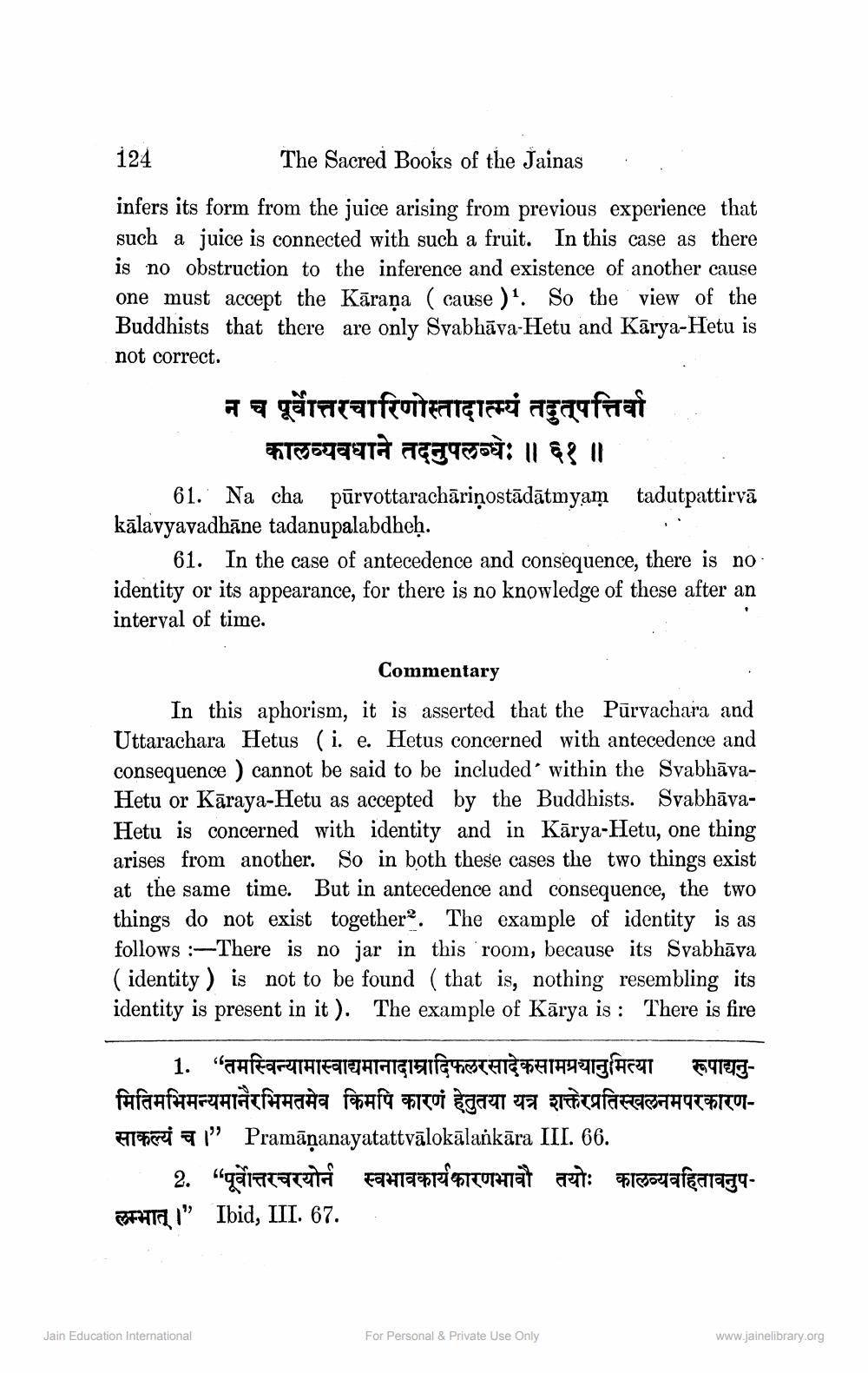________________
124
The Sacred Books of the Jainas
infers its form from the juice arising from previous experience that such a juice is connected with such a fruit. In this case as there is no obstruction to the inference and existence of another cause one must accept the Kāraņa ( cause )'. So the view of the Buddhists that there are only Syabhāva-Hetu and Kārya-Hetu is not correct.
न च पूर्वोत्तरचारिणोस्तादात्म्यं तदुत्पत्ति
1996479TÀ AGT49 : 11 88 11 61. Na cha pūrvottarachāriņostādātmyam tadutpattirvā kālavyavadhāne tadanupalabdheḥ.
61. In the case of antecedence and consequence, there is no identity or its appearance, for there is no knowledge of these after an interval of time.
Commentary
In this aphorism, it is asserted that the Pūrvachara and Uttarachara Hetus (i. e. Hetus concerned with antecedence and consequence ) cannot be said to be included within the SvabhāvaHetu or Kāraya-Hetu as accepted by the Buddhists. SvabhāvaHetu is concerned with identity and in Kārya-Hetu, one thing arises from another. So in both these cases the two things exist at the same time. But in antecedence and consequence, the two things do not exist together. The example of identity is as follows :—There is no jar in this room, because its Syabhāva ( identity ) is not to be found ( that is, nothing resembling its identity is present in it). The example of Kārya is : There is fire
1. "तमस्विन्यामास्वाद्यमानादाम्रादिफलरसादेकसामप्रथानुमित्या रूपाद्यनुमितिमभिमन्यमानैरभिमतमेव किमपि कारणं हेतुतया यत्र शक्तरप्रतिस्खलनमपरकारणAlbinei a " Pramāṇanayatattvālokālankāra III. 66. ___ 2. “पूर्वोत्तरचरयोर्न स्वभावकार्यकारणभावौ तयोः कालव्यवहितावनुपEHTOI" Ibid, III. 67.
Jain Education International
For Personal & Private Use Only
www.jainelibrary.org




